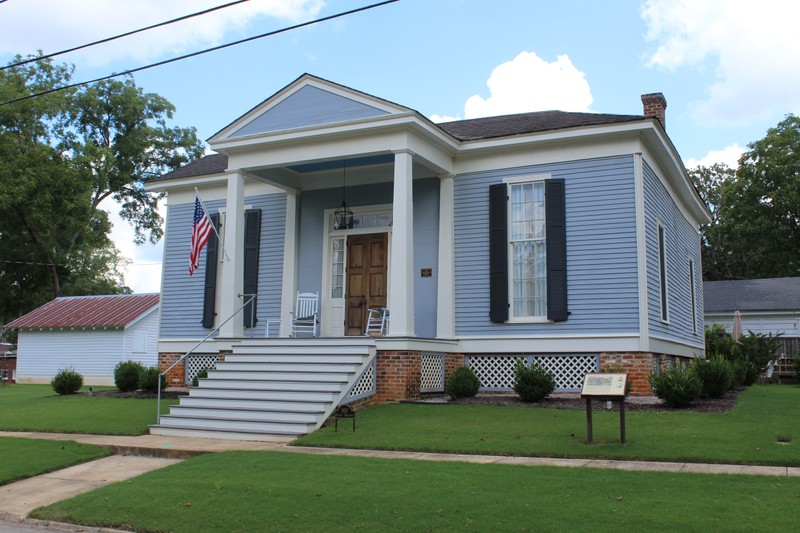Duncan House
Introduction
Text-to-speech Audio
Images
The historic Duncan House was built in 1857. Confederate and Union generals and officers used the house in 1862 during the Civil War.

Backstory and Context
Text-to-speech Audio
Duncan was born in South Carolina in 1800. He moved to Tennessee in his mid-20s and married his wife, Rebecca, in 1830; they would go on to have several children, including three sons who served in the war. The family moved to Tishomingo County around 1840 and Duncan was elected sheriff in 1846 and reelected the next year. In 1850 he was appointed as Superintendent of the State Penitentiary but left that position as a result of his poor health. However, he was well enough to serve as a delegate to the state convention in Jackson in 1851. Two years later, he opened a dry goods business with a partner that operated for many years. It wasn't until around 1857 that Duncan and his family (Rebecca passed away in 1852) moved to Corinth. He continued working as a merchant and it seems he operated his business in a building on Cruise Street.
Duncan was against secession but ultimately gave his full support for the Confederacy. He became a captain and was appointed assistant quartermaster for supplies in Corinth. In April 1862, after the Battle of Shiloh, Duncan moved his family to Rienzi, allowing General Beauregard to occupy the house. During the Battle of Corinth (also known as the Second Battle of Corinth) in October 3-4, 1862, General Rosecrans was using the house as his headquarters. On the 3rd, the fighting came quite close it, about a half mile away. The next day, there was, apparently, hand-to-hand fighting on the grounds of the house (it should be noted that the house is not in its original location). As noted above, Duncan's three sons served in the war. One of them, James, was killed in 1864 alongside another son, Thomas, who would go on to write a memoir about his experiences during the war.
Duncan returned to Corinth after the war and passed away in 1876. It appears that he had been living with his son-in-law. His son, Thomas, lived in the house after the war and it was at this time that he began to write his memoirs. As for the house, subsequent owners made a number of changes to it. It was moved to the present location after World War I and most recently renovated in 2014.
Cite This Entry
M., Ben. "Duncan House." Clio: Your Guide to History. December 26, 2020. Accessed April 13, 2025. https://theclio.com/tour/1764/2
Sources
"At the Center of Siege, Battle, and Occupations, William Duncan’s Home Witnessed Much Civil War Action." The Historical Marker Database. Accessed December 26, 2020. https://www.hmdb.org/m.asp?m=155261.
“A fearful hand-to-hand fight..." The Historical Marker Database. Accessed December 26, 2020. https://www.hmdb.org/m.asp?m=155254.
"The Duncan House." The Historical Marker Database. Accessed December 26, 2020. https://www.hmdb.org/m.asp?m=155236.
"The Historic Corinth Railroad Junction." The Historical Marker Database. Accessed December 26, 2020. https://www.hmdb.org/m.asp?m=155250.
"Staff Officers." The Historical Marker Database. Accessed December 26, 2020. https://www.hmdb.org/m.asp?m=155260.
"William L. Duncan: Pioneer Citizen." W.L. Duncan House.
Tom Bosse, via The Historical Marker Database

